For the past three years, Egypt has been presented as a country filled with political and economic turmoil. From photographs of protesters battling tear gas at Tahrir Square to footage of burning buildings and clashes, images of the authentic, everyday life in Egypt have been rare to find.
To tackle this and to present the intricacies of Egyptian life through images, a group of photographers created ‘Everyday Egypt.’ The following is an interview with Tinne Van Loon, a Belgian/American documentary photographer who has worked in Egypt since the start of 2013 and has been based in Cairo since April 2014. As the founder of Everyday Egypt, Tinne Van Loon provides us with an inside view of the recently founded project.
What is Everyday Egypt?
Everyday Egypt is an instagram feed and facebook page managed by a group of Egyptian and foreign photographers who want to present a more honest and complex picture of Egypt.
All too often, Egypt gets defined by its news headlines, and only images of protests, clashes, conflict and despair get published. This is a skewed and fatalistic view of the country, directly at odds with how many people experience life here. So Everyday Egypt tries to counter these extreme images, not by denying the impact and seriousness of these events, but instead by providing a context to them, by showing images of daily life continuing: the small moments, the normal, sometimes even mundane, but overall, the everyday.

For me, being in Egypt has often meant communicating without words, and my taking of photos has shifted over the years from urgency to meditation. In light of all that’s taking place now, I find myself seeking joyous moments to capture, the counter-narratives. Coming upon these two Bedouin boys giving their camel a bath in the Red Sea in Dahab, before climbing on its back to dive into the water, as it stood serenely still, was a beautiful scene I’ll treasure forever. One of my favorite novelists writes that the greatness of God reveals itself in the simple things. That’s what this photo expresses to me.
Why Egypt?
Egypt is Oum al Dunya, Mother of the World, the Cradle of Civilization!
But more importantly actually, Egypt, with its 90+ million inhabitants, is the most populous country in the Middle East, and it’s still regarded as the cultural hub of the Arab world, so by providing a greater view of everyday life in Egypt, we hope it also represents a greater view of the region as a whole.
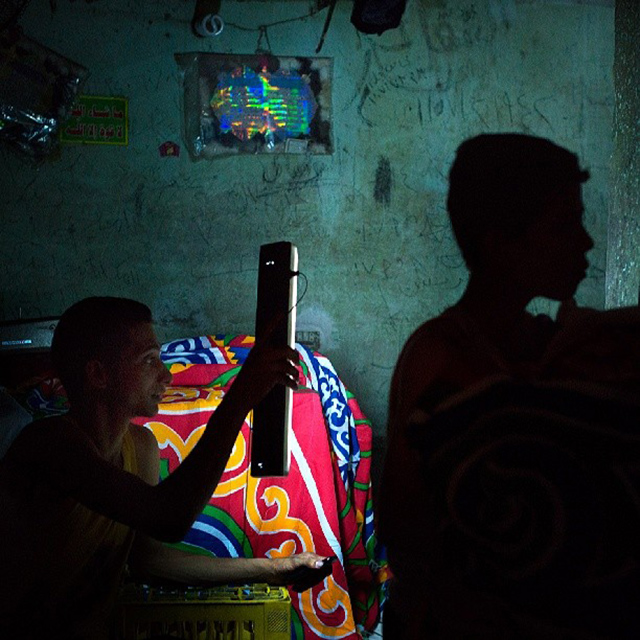
I like observing Ramadan preparations in Islamic Cairo. On many street corners, shops with fanous – traditional Ramadan lanterns – appear. People are buying decorations made of traditionally designed colorful fabric. This time I visited Tent Maker Bazaar, where many of the fabric decorations are made and sold, when suddenly a power outage occurred. Instead of leaving the dark place I took advantage of photographing their obligatory break from work in a quite unusual lightning situation.
What inspired you to start Everyday Egypt?
Everyday Egypt is actually part of a much larger movement that’s happening across the world. It all started in 2012 with Everyday Africa being conceived by Peter DiCampo and Austin Merrill. They aimed to show Africa as a place beyond war, poverty, and disease, and instead to show normal everyday life, since those images weren’t making it to the mainstream media. So they gathered a group of photographers across the continent and started the instagram feed everydayafrica. The idea got viral and there’s now a large Everyday community, including Everyday Middle East, Everyday Asia, Everyday Iran, Everyday Eastern Europe and since last week also Everyday Latin America.
The idea for Everyday Egypt got started when earlier this year Everyday Middle East featured one of my photographs for their Follow Friday. I reached out to Lindsay MacKenzie, the founder, to thank her for featuring my work. It was Lindsay that brought up the idea to start Everyday Egypt. The thought hadn’t crossed my mind before our chat, but I was instantly excited and got to work.
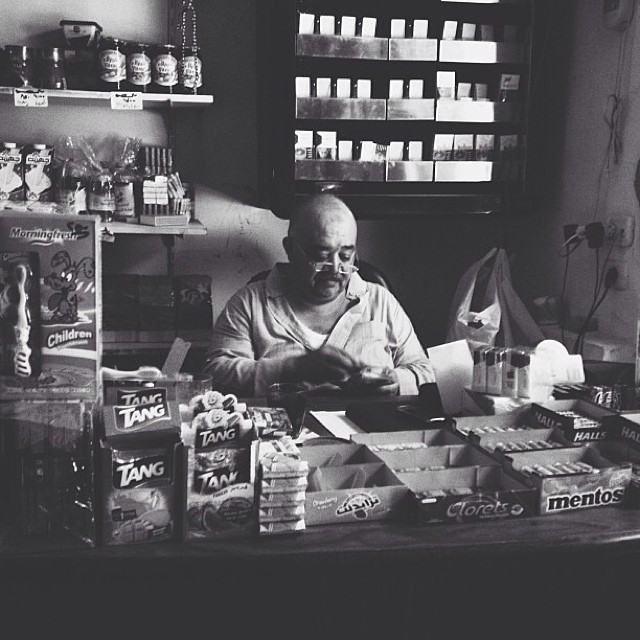
The image is one of my favorite that I took while in Cairo. To me, it’s all about the local street markets. From candy bars to toilet paper, they tend to have just about everything that you need. Often I would find myself stopping by this particular one while winding my way through the streets of Zamalek. Something about its location and how it was slightly underground caught my eye. I asked a friend one day what the name of the the man was that owned this store and he replied “Mr.Happy.”
What is the aim of Everyday Egypt?
Our aim is very simple, to break the stereotypes and misconceptions people may have of Egypt, by showing the diversity in everyday life and celebrating what intrigues us about Egypt. Of course we also hope to be a source for high quality photography of the country.
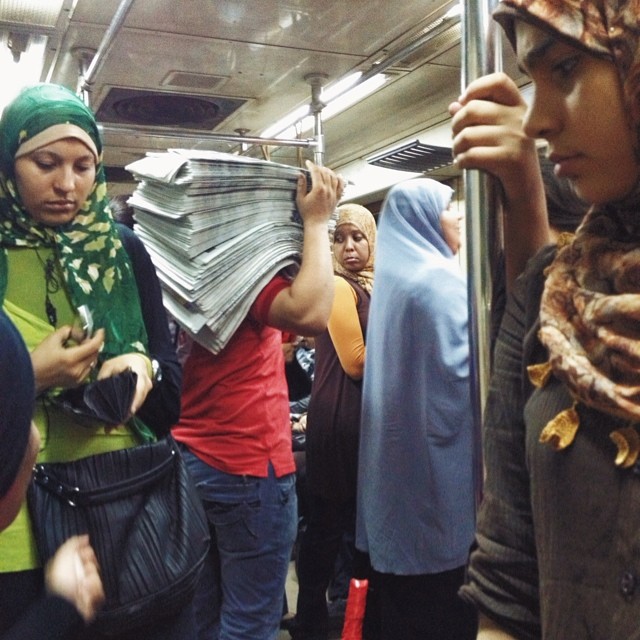
Today’s news is old news. On my way home after a long day covering protests around Cairo a man was selling newspapers on the women’s metro car.
Tell us about the team and how you cooperate together?
When I first had the idea for the project, I started making a list of potential photographers who would be good to include, I was specifically looking at their quality and diversity of work. I then e-mailed each of them, introducing them to the idea of the project and inviting them to participate, and nearly all of them responded with a resounding YES!
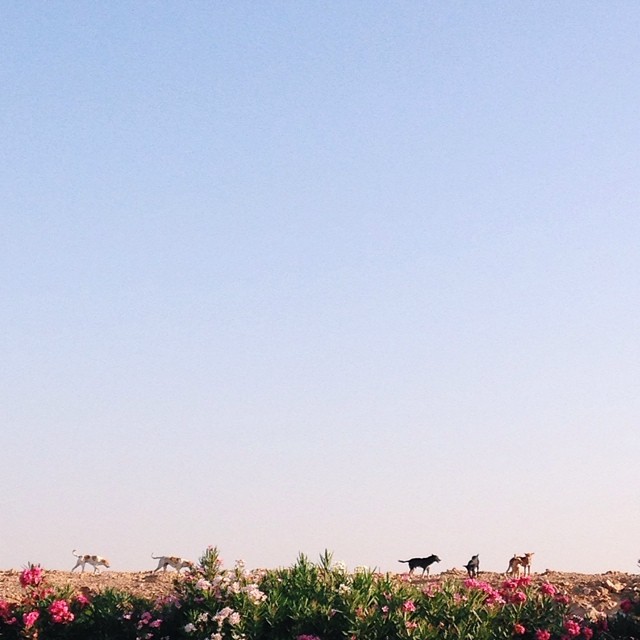
One morning, much earlier than I prefer to get up, I was waiting for a taxi to cover an assignment. Across the street, I noticed a few stray dogs walking along a ridge of dirt. More appeared from the bushes. Normally, seeing a pack of stray dogs is an everyday occurrence, but in the morning light, and framed by the a row of well-manicured flowers, all the elements came together to form a fleeting moment of everyday beauty that is all around us, yet is rarely noticed.
How did you select your team?
With selecting the contributors, I was really aiming to create a diverse group to gain different perspectives on the country. So to give you an example, our group includes Egyptian photojournalists such as Roger Anis and Jonathan Rashad, and foreign photojournalists such as Amanda Mustard. Then there’s Shadi Rahimi who’s largely focused on working class areas and youth. I’m also very excited by the different eye of Nadia Mounier and Leyland Cecco, they often notice moments that I would pass by unnoticed. As a group combining our visions of the country, I think we can really provide a more complete image.
We are still expanding our contributor base to gain even more variety in images, so we are planning on choosing future members based on their work on instagram tagged with #everydayegypt
The project requires a lot of trust and responsibility as each member is handed the password to the account. Besides the basic guidelines I give in the beginning, ultimately we all have full freedom in what we post. This also really makes it a community project, as we all have equal say in the curation of the feed, showing Egypt in all of our combined perspectives.
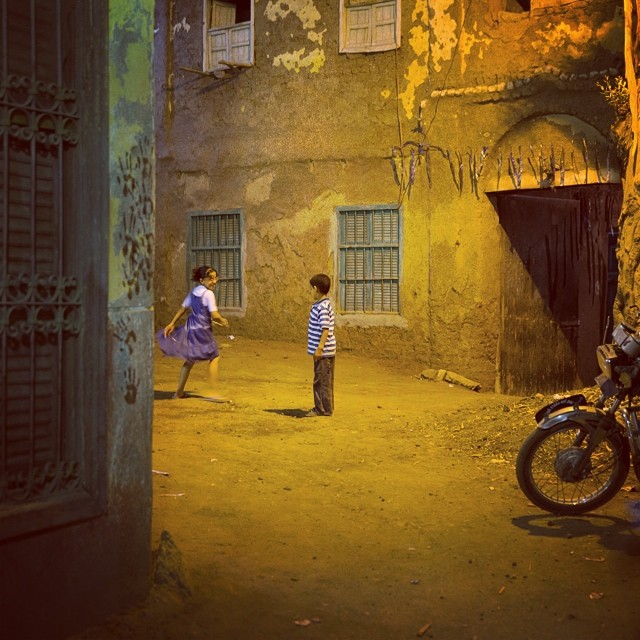
While attending a friend’s wedding in Koum el Atroun, a remote village two hours outside of Cairo, I saw this scene in the side street. These children were playing together under the light of a street lamp and it was just such a simple reminder of how innocent and beautiful childhood can be in all its simplicity. This is a universal moment that anyone can connect with, no matter where they’re from. A nice detail that is more Egypt-specific is the bloodied hand prints from Eid on the wall on the left, which actually look quite child-like as well.
Who are your team members?
Our current contributor lists consists of the following (you can click on their names to access their instagram profiles for more photographs!):
Amanda Mustard, Amru Salahuddien, Ania Krukowska, Chaoyue Pan, Christina Rizk, Jonathan Rashad, Keith Lane, Leyland Cecco, Mahmoud Khaled, Nadia Mounier, Roger Anis, Shadi Rahimi, Sima Diab, Tara Todras-Whitehill, and myself (Tinne Van Loon).

Electricity has been a major issue in Egypt over the past three years. However, thousands of Egyptians never had electricity for tens of years. I was amazed when I went to Al-Haiz village with a friend of mine to see the ongoing project there to supply the entire village with solar-powered electrical units. I’m currently working on a project to cover the whole solar energy scene across Egypt.
What has been people’s feedback so far?
The response has been amazing! People respond really positively and more followers keep streaming in each day. It seems that there really was a need for this type of project. Right now our reach is the greatest in Egypt, but we hope to expand outside of Egypt as well, so we can really break some misconceptions of the country.

Aya, 6 years old girl from Al-Nusaireya, a small village in Giza countryside. Aya is the youngest among her 5 brothers and sisters. For the moment she’s homeschooled, her mother can’t afford regular education. That applies in nearly the majority of the children of this poor village.
How do you see Everyday Egypt expanding in the future?
We’re hoping to turn this into a greater movement than just the main contributors to the Everyday Egypt feed, and it’s already starting, with people tagging their images with #everydayegypt. We also are participating in the Everyday-movement-wide Follow Friday where we feature an instagram image tagged with #everydayegypt each Friday.
Besides our online presence, we may end up organizing exhibitions. We’re just in our early stages, as we only launched a month ago, but we’re very open and excited for any collaborations and ideas that fit our goal.
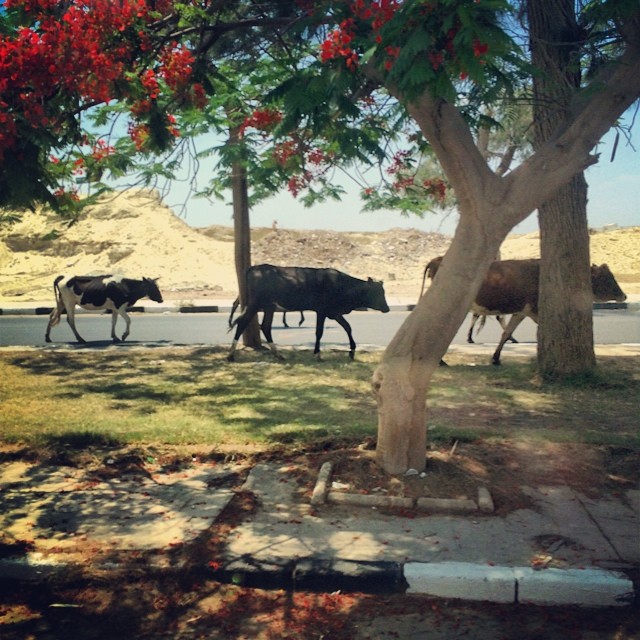
I took this photo from the bus, on my way to the Suez Canal in Ismailia. It was surprising to see a folk of around 10 cows walking peacefully on the high way. The composition of the yellow desert and harsh day light of a country like Egypt is perfectly broken with a folk of cows passing by. The magic of the everyday in Egypt is how it makes new things familiar and familiar things new again, which allows for great opportunities for photography.
Where can readers go to learn more about Everyday Egypt? Are there any ways in which individuals can help?
You can get involved with the project by following us on our Instagram feed and Facebook page. You can also be part of the greater Everyday Egypt movement by tagging your photos on instagram with #everydayegypt. Every friday we feature one of our followers that tagged their images with the hashtag.

I took this at the Japanese Gardens in Helwan, off the end of one of the metro lines in Cairo. My favorite thing about Cairo is how many secret oddities are hidden about, like this garden(although dilapidated) with dozens of Buddha statues that have been around since 1917. Egypt is a vast land pumping with energy, and for the adventurous, there isn’t a day it won’t surprise you.
Thank you very much. Is there anything else you’d like to add?
If you’re in Alexandria next Friday (July 11, 2014), and would like to hear more about Everyday Egypt, Tinne Van Loon will be giving a talk about the project, as well as her personal work at the View Finders Club. Find out more by clicking here.
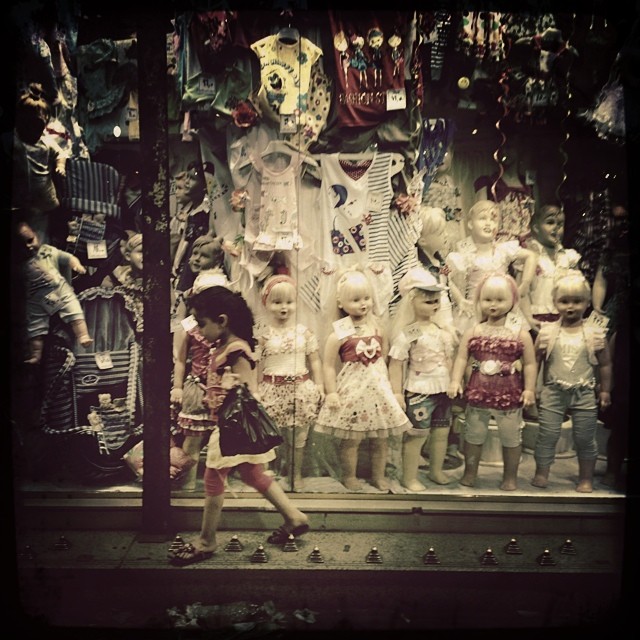
Something that has always struck me about the store windows for children in Egypt, is the use of numerous kid mannequins, all very much on top of each other. I do have an obsession with mannequins in the Middle East, and Egypt is a particularly good place taking pictures of them because they tend to be used so oddly. In this picture I liked the juxtaposition of the little girl in front of the window – the muted colors makes you consider for a second if she is behind the glass or in front of it.
Keep reading for more photographs from the wonderful contributors of Everyday Egypt!
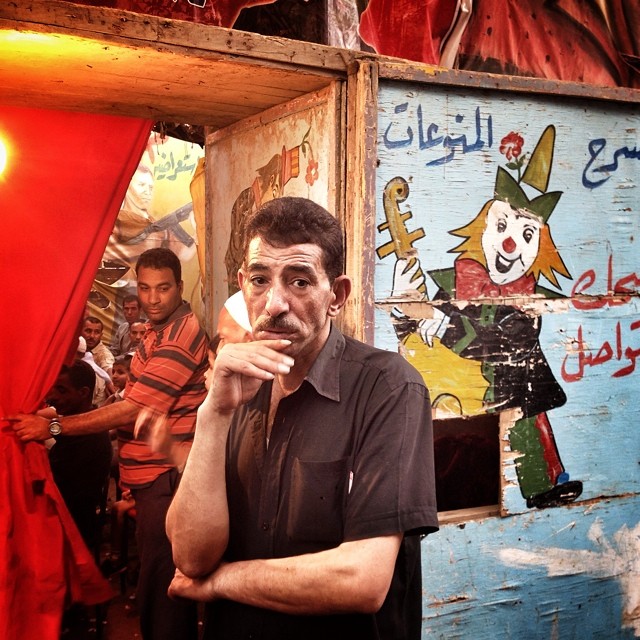
Standing face-to-face with and taking photos of Egyptians is not easy for me, as an Asian-looking guy. Observing what Egyptians do in their daily life, taking photos of how Egyptians look, getting closer and closer to what a real Egypt is, are my missions in Egypt.
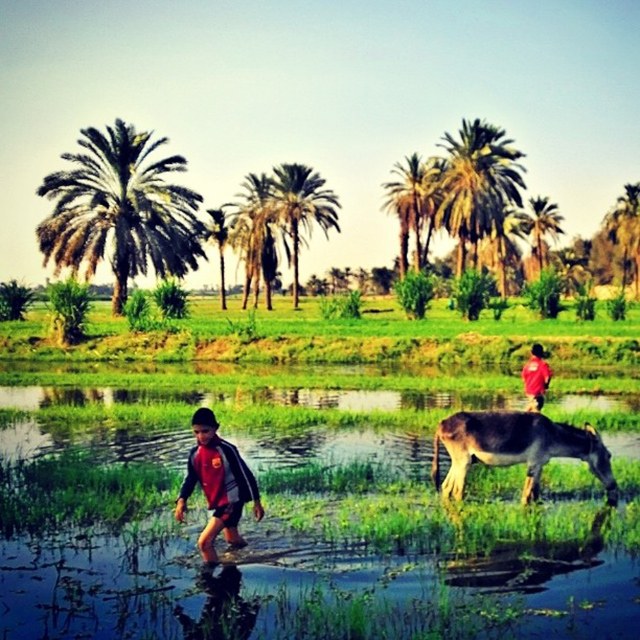
Boys playing in the field in Haj Qandil village, one of Minya city villages in Upper Egypt, south of Cairo. This picture is representing everyday Egypt, because agriculture is considered an important source of living in Egypt, especially in the Delta and Upper Egypt. A lot of children help their parents in farming the fields every day. It is also a place for them to play and enjoy.
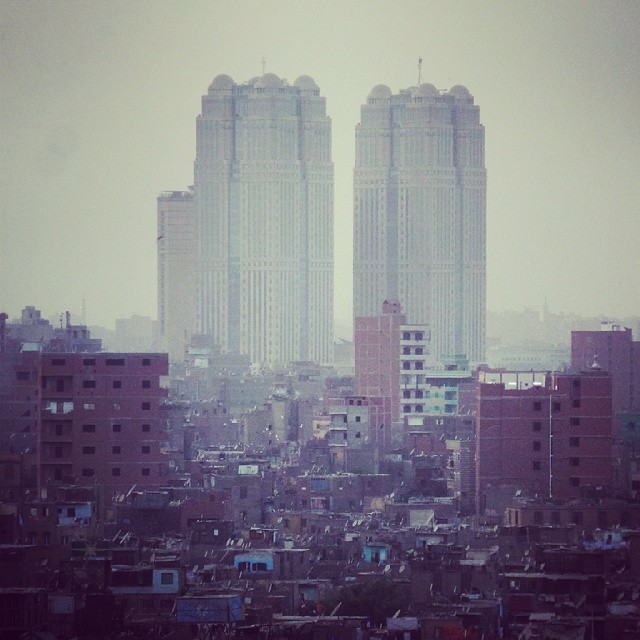
A general view of Cairo at sunset.



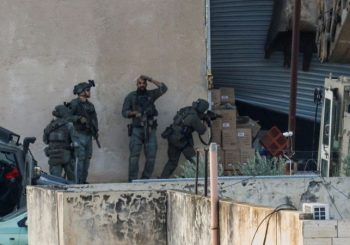


Comments (5)
[…] An Inside Look Into The Everyday Lives of Egyptians – For the past three years, Egypt has been presented as a country filled with political and economic turmoil. From photographs of protesters battling tear gas at Tahrir Square to footage of burning buildings and clashes, images of the authentic, everyday … […]
Great photographs. One of my own from 2004: